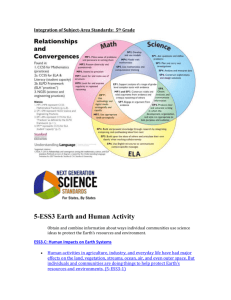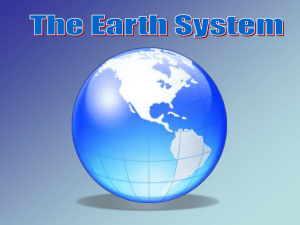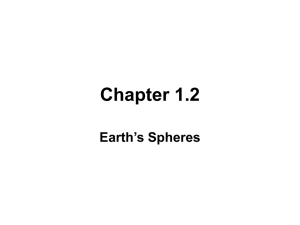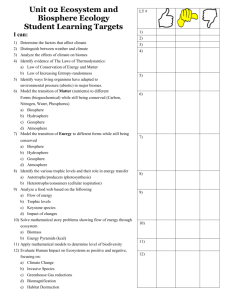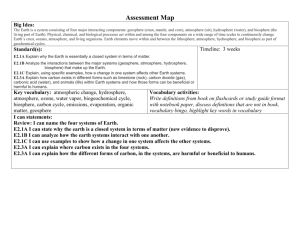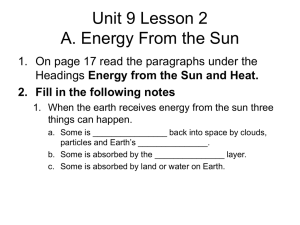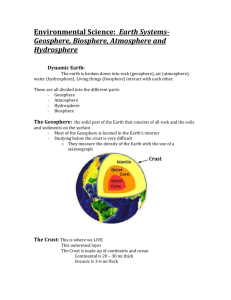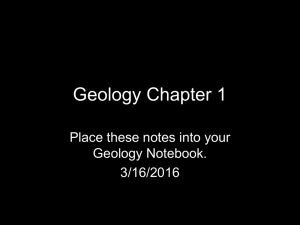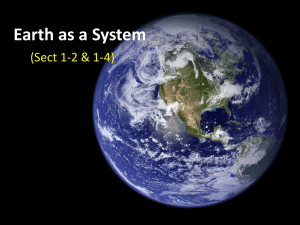5-ESS3 Earth and Human Activity Obtain and combine information
advertisement
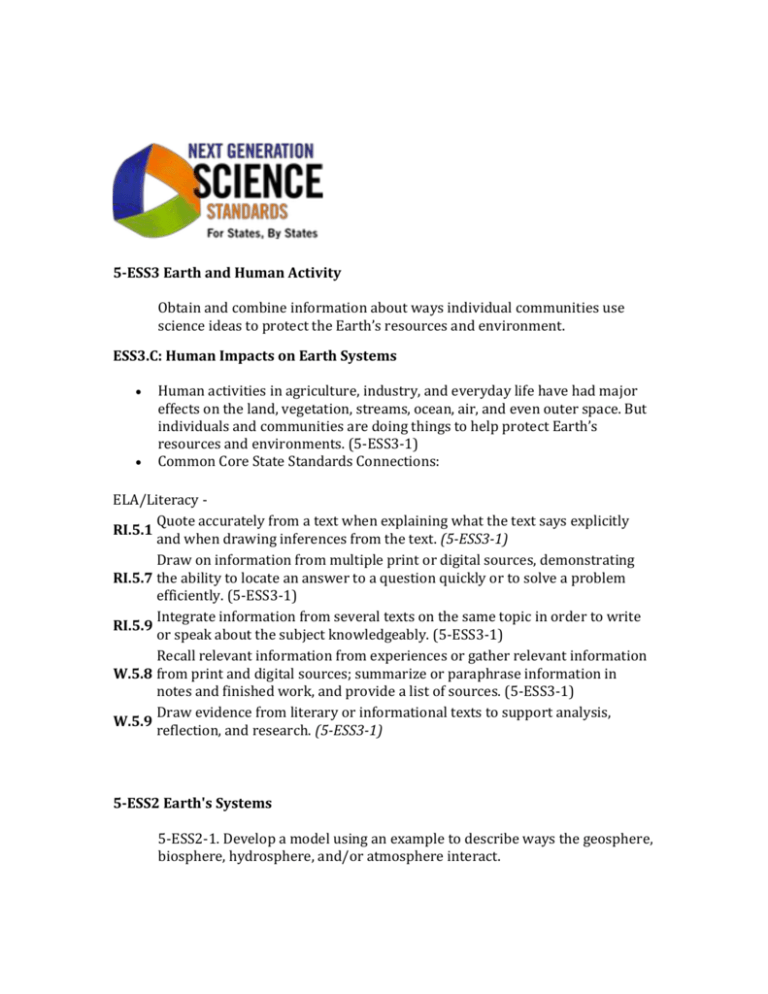
5-ESS3 Earth and Human Activity Obtain and combine information about ways individual communities use science ideas to protect the Earth’s resources and environment. ESS3.C: Human Impacts on Earth Systems Human activities in agriculture, industry, and everyday life have had major effects on the land, vegetation, streams, ocean, air, and even outer space. But individuals and communities are doing things to help protect Earth’s resources and environments. (5-ESS3-1) Common Core State Standards Connections: ELA/Literacy Quote accurately from a text when explaining what the text says explicitly RI.5.1 and when drawing inferences from the text. (5-ESS3-1) Draw on information from multiple print or digital sources, demonstrating RI.5.7 the ability to locate an answer to a question quickly or to solve a problem efficiently. (5-ESS3-1) Integrate information from several texts on the same topic in order to write RI.5.9 or speak about the subject knowledgeably. (5-ESS3-1) Recall relevant information from experiences or gather relevant information W.5.8 from print and digital sources; summarize or paraphrase information in notes and finished work, and provide a list of sources. (5-ESS3-1) Draw evidence from literary or informational texts to support analysis, W.5.9 reflection, and research. (5-ESS3-1) 5-ESS2 Earth's Systems 5-ESS2-1. Develop a model using an example to describe ways the geosphere, biosphere, hydrosphere, and/or atmosphere interact. 5-ESS2-2. Describe and graph the amounts and percentages of water and fresh water in various reservoirs to provide evidence about the distribution of water on Earth. Students who demonstrate understanding can: Develop a model using an example to describe ways the geosphere, biosphere, hydrosphere, and/or atmosphere interact. [Clarification Statement: Examples could include the influence of the ocean on ecosystems, 5landform shape, and climate; the influence of the atmosphere on landforms ESS2and ecosystems through weather and climate; and the influence of mountain 1. ranges on winds and clouds in the atmosphere. The geosphere, hydrosphere, atmosphere, and biosphere are each a system.] [Assessment Boundary: Assessment is limited to the interactions of two systems at a time.] Describe and graph the amounts and percentages of water and fresh water 5- in various reservoirs to provide evidence about the distribution of water on ESS2- Earth. [Assessment Boundary: Assessment is limited to oceans, lakes, rivers, 2. glaciers, ground water, and polar ice caps, and does not include the atmosphere.] ESS2.A: Earth Materials and Systems Earth’s major systems are the geosphere (solid and molten rock, soil, and sediments), the hydrosphere (water and ice), the atmosphere (air), and the biosphere (living things, including humans). These systems interact in multiple ways to affect Earth’s surface materials and processes. The ocean supports a variety of ecosystems and organisms, shapes landforms, and influences climate. Winds and clouds in the atmosphere interact with the landforms to determine patterns of weather. (5-ESS2-1) ESS2.C: The Roles of Water in Earth’s Surface Processes Nearly all of Earth’s available water is in the ocean. Most fresh water is in glaciers or underground; only a tiny fraction is in streams, lakes, wetlands, and the atmosphere. (5-ESS2-2) Common Core State Standards Connections: ELA/Literacy Draw on information from multiple print or digital sources, demonstrating RI.5.7 the ability to locate an answer to a question quickly or to solve a problem efficiently. (5-ESS2-1),(5-ESS2-2) Recall relevant information from experiences or gather relevant information W.5.8 from print and digital sources; summarize or paraphrase information in notes and finished work, and provide a list of sources. (5-ESS2-2) Include multimedia components (e.g., graphics, sound) and visual displays in SL.5.5 presentations when appropriate to enhance the development of main ideas or themes. (5-ESS2-1),(5-ESS2-2)
